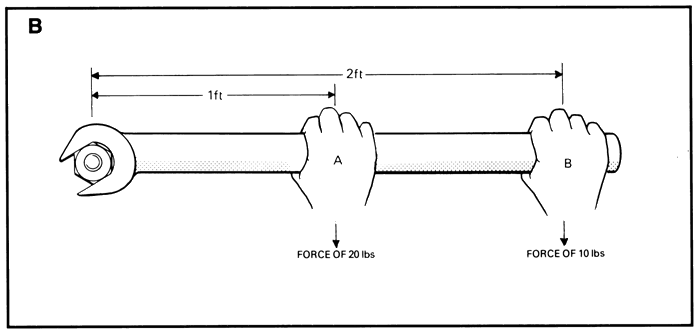Sorry, but I don't agree with that. Get a one-foot ruler out and have a look at it; does that look like the length of the sort of torque wrench you'd use on 7/16" nuts? Remember, we are talking about a wrench specifically designed for propeller nuts.
Bob, you're probably right. I just based that statement on the fact that my 100lbs-ft clicker wrench happens to have a 12 inch effective length. My old beam style wrench is 17" (weird).
Mike,
There is no way I can hold that much if it were a simple lever.
I don't know, you look pretty stout.





